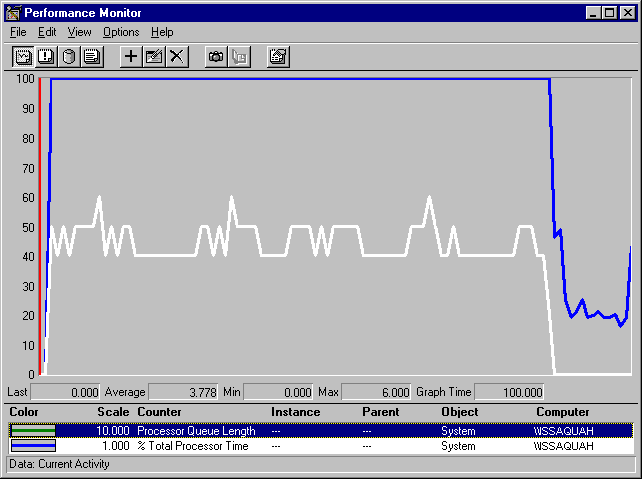
Sometimes a single thread in a process can cause a processor bottleneck, making the whole process and the processor function poorly. Bottlenecks caused by multiple threads in a single process, single threads in multiple processes, and multiple threads in multiple processes are essentially the same: Too many threads are contending for the processor at the same time. However, because these situations are resolved quite differently, it's worth distinguishing among them.
The following figure shows a graph of processor time and queue length during a bottleneck caused by a single, multithreaded process. The line running across the top is processor time. The white line is queue length.

The queue is quite long, running between 4 and 5 ready threads with periodic peaks of 6 threads. The EKG-like pattern is just an artifact of the application. These large values might trick you into thinking multiple processes are at work. The clue that the queue is populated by many threads of just one process comes at the end of the graph when the process is stopped, and the queue length drops to 0.